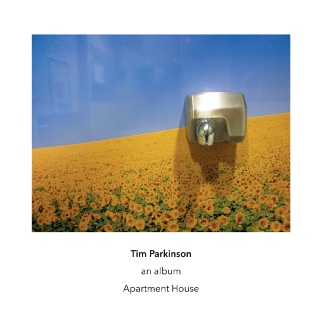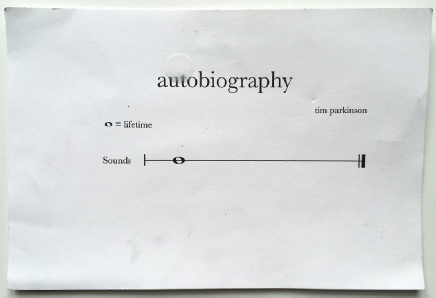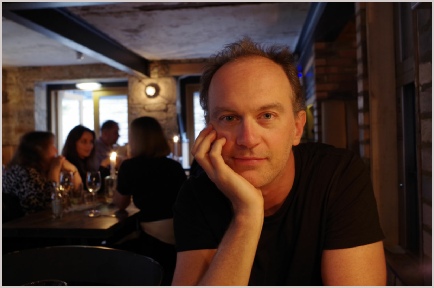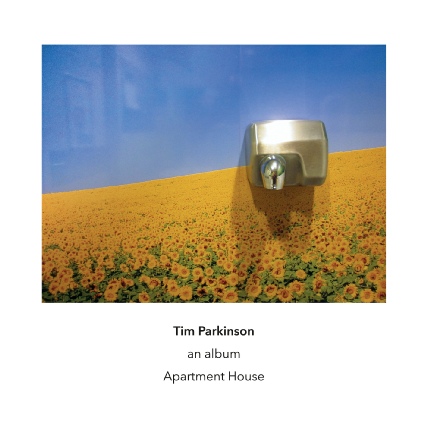Another Timbre TimHarrisonbre

at197 Tim Parkinson ‘an album’
Apartment House
1 ‘violin piece 1999’ Mira Benjamin, violin
2 ‘septet 2007’ Kathryn Williams, flute Heather Roche, bass clarinet
Mark Knoop, piano Mira Benjamin & Gordon MacKay, violins
Bridget Carey, viola Anton Lukoszevieze, cello
3 ‘violin and pianopiece 1998’ Mira Benjamin, violin Siwan Rhys, piano
4 ‘ensemble 2012’ Kathryn Williams, flute Heather Roche, bass clarinet
Mira Benjain, violin Bridget Carey, viola
Anton Lukoszevieze, cello
5 ‘violin and piano 2017’ Mira Benjamin, violin Siwan Rhys, piano
Youtube extract 1 (violin piece 1999) Youtube extract 2 (violin & piano 2017)
Interview with Tim Parkinson
Could you tell us about your musical background and how you came to experimental music?
Piano playing for domestic self-entertainment comes from my grandmother and mother’s side. Buying records and curiosity about music probably comes from my Dad. After my formal studies I moved to London in 1997 and began to programme concerts. I’ve always liked finding music and art that excites me, that opens up a new space in my brain. Music either does that for me or it doesn’t. I don’t think about the categories. Some music is more critical, more exploratory than others, considers what it is and why it is and what it’s doing here now, rather than just imitating past forms and tropes without question. But I like and listen to a lot of music.
Yes, your programming of concerts through vehicles such as Music We’d Like To Hear is wonderfully eclectic and diverse, and free of adherence to any particular style of music.
I’m happy that you think so. I’m always curious about music. Programming and performing concerts for me at first was a like continuation of my education. It’s also a way of sharing the wealth. There’s a lot of composers out there making wonderful and engaging work and there’s not enough places to hear it. Then the concerts also end up functioning as invaluable meeting points for the community. I organised concerts mostly at the British Music Information Centre (BMIC), usually with one or two other musicians, until in 2005 I and fellow independents John Lely and Markus Trunk decided to unite our separate concert-making under one banner and call it Music We’d Like To Hear. With that nowadays the programming comes from a wider collective input. It is eclectic as you say, but it’s all under the umbrella of shared broad aesthetics. The programming choices all orbit about each other, and some have a wider orbit than others. I like to be open and inclusive just as I like to be in my own work as well.
For me a lot of your music has an everyday quality of just being there rather than trying hard to be beautiful. Does that make any sense?
Yes, if that’s your feeling then of course it makes sense. I can’t answer what or why it is. I like what you say. A quality of Being. And the quality of “everyday” seems to me to be an acknowledgment of an elemental truth...?
You must have been pretty young when you wrote violin and piano piece 1998 and violin piece 1999, yet to me they don't sound radically different from the later works on the CD. What do you make of them now, and do you consider them to be 'early works'?
I was 24 and 26. I still recognise them and like listening to them. violin and piano piece 1998 is the first of five I’ve written since (the others from 2000, 2009, 2017, 2022). This one is from a period of work from 97 to early 99 working with ideas drawn from organic forms and structures. In this work the two equal parts are played simultaneously and uncoordinated, with re-occurring structured points of contact. It was first performed by Mia Cooper and me at the BMIC in London the same year. violin piece 1999 is one of two works for solo violin to date (the other from 2006). This one is from a period of work from late 1999 to 2005 working with more heterogeneous ubiquitous material which has probably arisen from the urban environment in which I live. It was first played by Brian Lee in a recording session the following year. Each period of work of has grown out of the previous and leads to today where it is ongoing.
Was it unusual to be composing so much with melody in the mid- to late 1990’s? It feels like you were aside from what were the dominant strands in contemporary music at the time. And do you feel this has changed over the years?
I think of them as lines. It was just what was claiming my attention at the time, exclusively in pieces like this one and piano piece 1997 and the wind quintet, in various different ways. Everyone I was hanging out with around then (Matteo Fargion, Bryn Harrison, James Saunders, Matthew Linley) were all involved with their own separate pursuits, and I was too. I think of line as one of the fundamentals. What is line, and what is its meaning. Lines also appear towards the end of septet 2007, and in violin and piano 2017 the violin part is one continuous unbroken line.
To what extent do you start composing with a whole structure of a work in mind? Or do you just set out along a line and see what happens?
It’s rarely the same working process each time. The initial image usually comes from the instrumentation. So then for me ensemble 2012 was a challenge because the Sonorités Festival wanted a piece for non-specific instrumentation. So there instead the thinking became to do with the idea of “ensemble”, i.e. “together”, and therefore “working together”. So, how, and in what ways? My previous pieces from 2006 to 2010 were all made up of multiple panels, so for this one I wanted to focus on just a few instead, like three big close-ups. In the last section the performers have to choose a soloist to lead the way forwards, to make a line together. In the first performance it was trombone, but on this recording it’s viola. I had another go at this starting point the following year in ensemble 2013 which is for the idea of a larger soundmass.
septet 2007 grew out of the instrumentation which was for quite a standard line up of flute, clarinet, string quartet, piano, which Apartment House had asked me to make for a radio broadcast in Cologne. I’d written another septet in 2004 which is for a more vagabond collection (flute, violin, piano, reed organ, 3 percussionists & audio track). But this line up for 2007 put me in mind more of that inherited old chamber music sound which is smoother and more homogenous. So I began by stockpiling it, all of it all at once, then leafed through it, then spread it all out until the sound ran out.
violin and piano 2017 began with the old notion of melody and accompaniment, which I think of as another found object which is just completely commonplace and everywhere. Here I started with the complete line end to end, then fitted the vertical supports. The final shape of it seems to me to have been carved out of all that potential coupled with what felt like certain inflexible non-negotiables I had to work around. That ended up being a very involved working process which took weeks.
So working processes change, since I change. There’s still the thrill of limitless potential, even only with the sounds of these familiar instruments. But it’s always finding the here and now of it, in this well-trodden arena strewn with ruins and ancient masterpieces, while living in an information tsunami and environmental apocalypse.


Tim Parkinson
